Britain is again experiencing a scorching summer.
The Environment Agency warned this week that a hosepipe ban could be imposed on most of England, and wildfires have been raging in places including East London.
For some, the soaring temperatures are drawing comparisons with the searingly hot weather throughout the summer of 1976.
Back then, there were 15 consecutive days where the mercury hit 89.6F (32C) somewhere in the UK.
The weather caused widespread drought, mass standpipe use, hosepipe bans and an increase in 999 callouts to domestic disturbances.
Londoners took to cooling off in public fountains, including the one at the heart of Trafalgar Square.
One doctor went as far as advising people to drink beer and eat crisps to counteract the salt lost through sweat.
And Britons certainly took the advice to enjoy a pint on board, with brewers recounting the ‘phenomenal demand’ during the ten weeks of blazing heat.

Bikini-clad women are seen enjoying the hot weather on a balcony overlooking Park Lane in London during the scorching summer of 1976
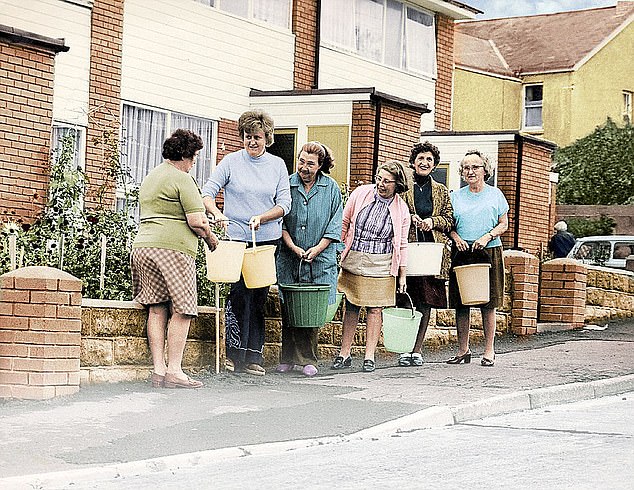
Residents collect water from a standpipe in Northam, Devon, during the summer of 1976
During a First Division football match between Manchester City and Aston Villa, City player collectively lost four stone in weight, prompting the team’s captain to call for an end to ‘summer soccer’.
At that year’s Wimbledon tennis championships, umpires were allowed to remove their jackets for the first time in living memory as 400 people had to be treated for heat exhaustion in a single day.
Major roads were littered with broken-down cars that had overheated.
The summer of 1976 was caused in part by very hot air that had originated in the Mediterranean.
The drought was worsened by the fact that there had been a lack of rainfall the previous summer, meaning reservoirs and rivers were already low.
The highest temperature recorded in the summer was on July 3, when the mercury hit 96.6F (35.9C) in Cheltenham.
The town saw temperatures rise above 89.6F (32C) for seven consecutive days.
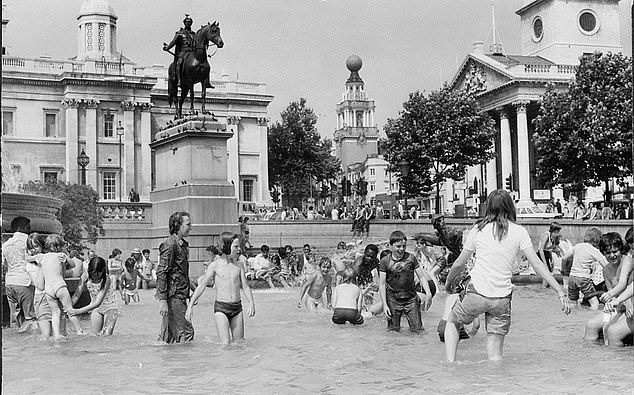
Children are seen playing in the Trafalgar Square fountain to try to cool down during the 1976 heatwave
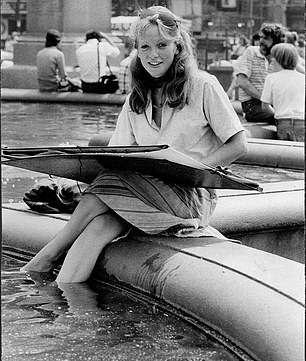
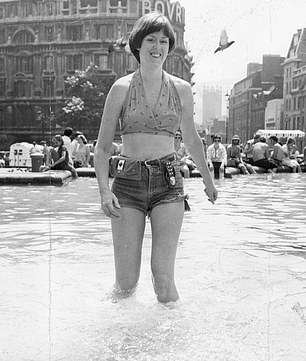
Britons call off in the fountains of Trafalgar Square during the summer of 1976
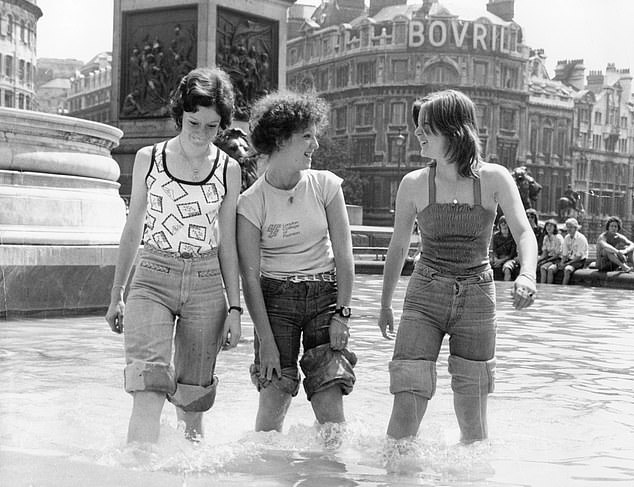
Women enjoy the cooling water in the fountain at Trafalgar Square
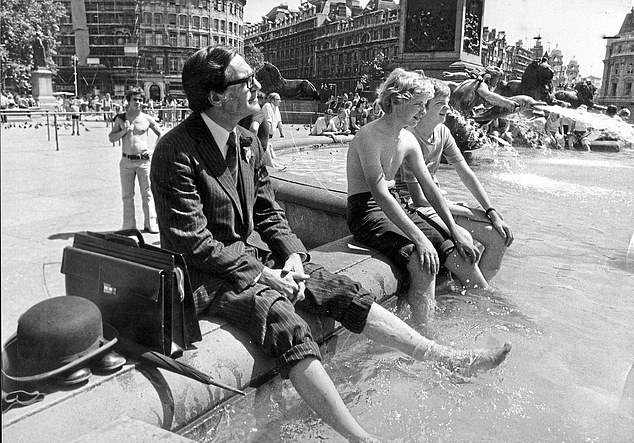
A businessman sits with his trousers rolled up and his legs planted in the water of the fountain at Trafalgar Square
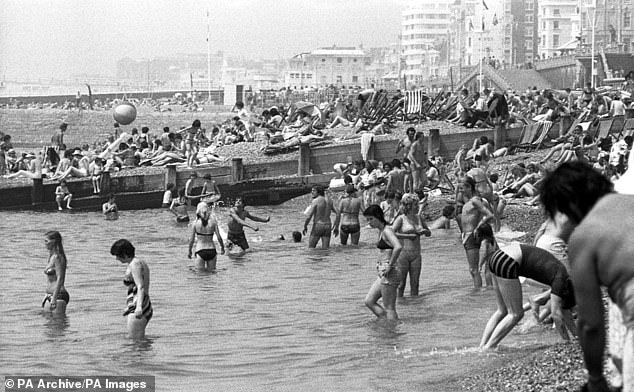
Britons enjoy the sun on Brighton beach during the heatwave of 1976
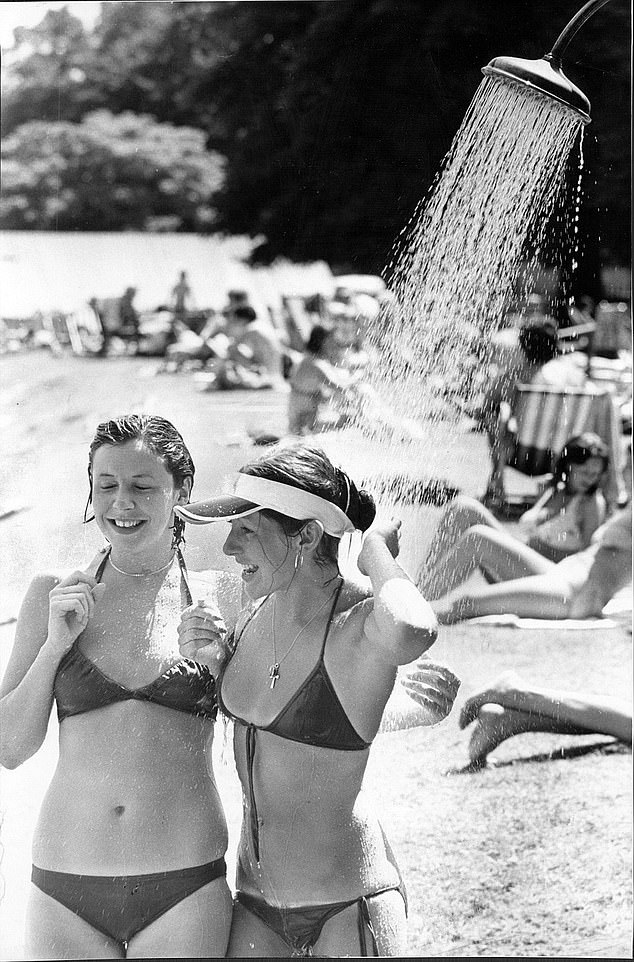
Two young women are seen cooling off with the help of an outdoor shower as temperatures soared during the ten-week heatwave
The average maximum daily temperature was 67.8F (19.9C).
Cardington in Bedfordshire and Heathrow in Greater London both saw 16 consecutive days of the mercury being above 30C.
Newspapers reported that you could fry an egg on the runway at Heathrow.
Aligning with the national need to save water, the Queen ordered an end to the use of sprinklers in Palace grounds.
In much of the country, water was rationed between 6pm and 7am.
Residents were encouraged to alert the authorities if their neighbours used any water unnecessarily.
Baths were only allowed if there was no more than 5inches of water in the tub.
The Mail reported on unscrupulous traders selling cans of cold drinks at sky-high prices in tourist hotspots in London.
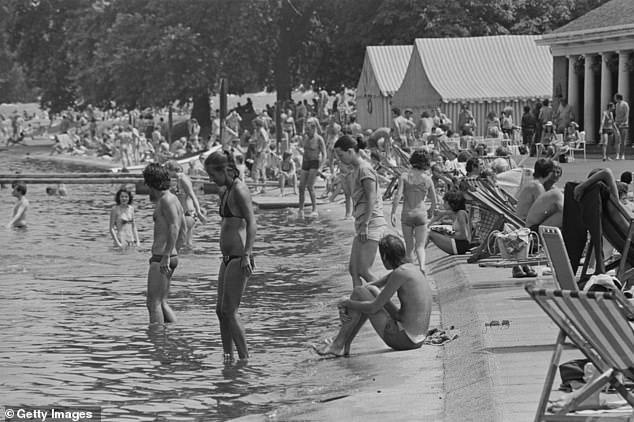
Londoners relaxing on a summer day near The Serpentine in Hyde Park, London, June 1976
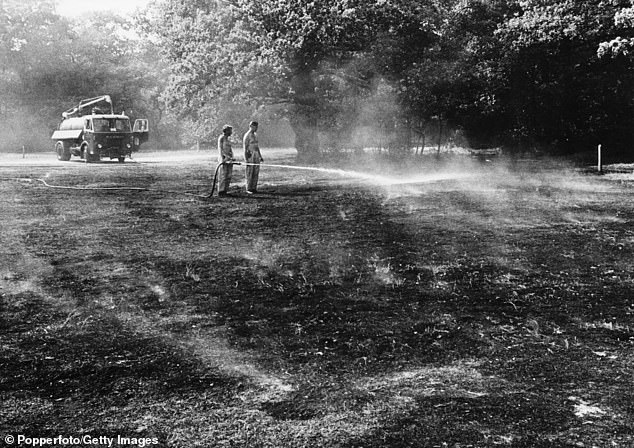
Firefighters putting out a forest fire in Epping Forest, near London, July 6, 1976
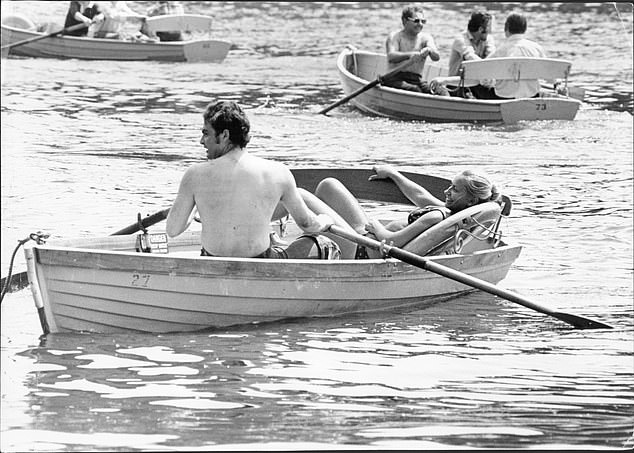
Britons take to the water in boats to enjoy the hot weather during the summer of 1976
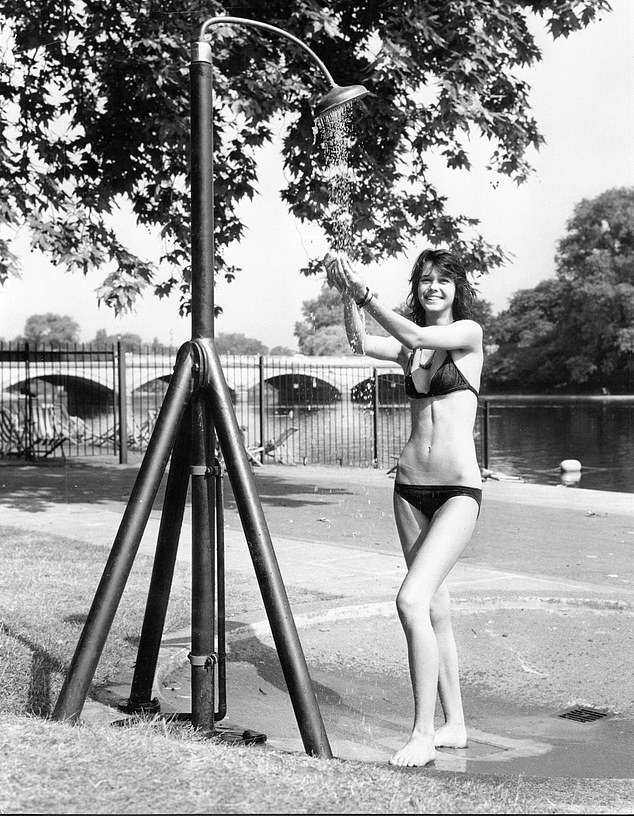
Bikini-clad women were proving a ‘major distraction’ for motorists, one police force warned
There was tragedy too. On a single day in June, 15 people drowned in separate incidents around the country.
New book Heatwave: The Summer of 1976 Britain at Boiling Point, by John L Williams, recounts how children took full advantage of the hot weather by writing their names in roads that had melted in the heat.
One schoolboy recalled: ‘Every corner where we lived had all our mates’ names inscribed in tarmac.
‘It was that hot the tarmac actually melted; we loved it.’
Forest fires sprang up around the country. One of the worst was in Ringwood, on the edge of the New Forest.
The Mail’s front page story on August 18 recounted the drama. One resident said: ‘The flames were 30ft. high and moving as fast as a man can run.
‘I saw they were heading straight for us. I told Denise we’d better get out. I pushed my Mini into the pathway away from the trees – and then we both ran.
‘It’s lucky we weren’t burned alive.’
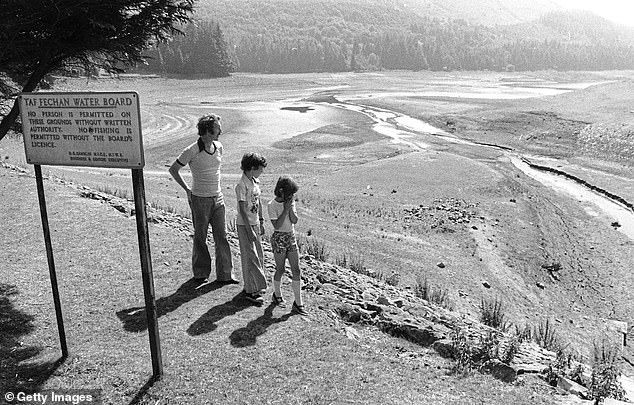
Residents surveying the Taf Fechan reservoir in South Wales during the drought of 1976
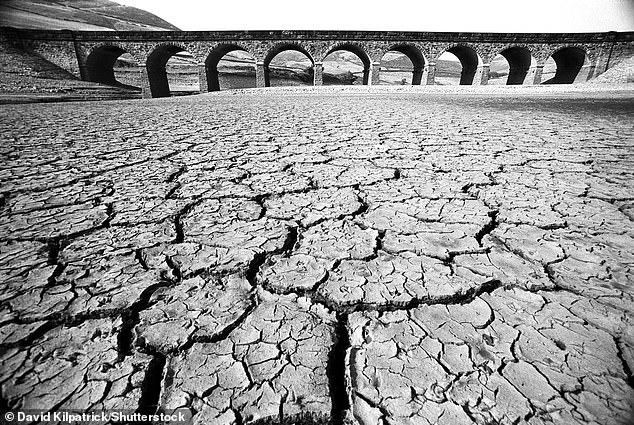
The parched and cracked bottom of Ladybower reservoir
At the end of August, the Mail reported how wild fires had destroyed more than four million trees.
Three thousand acres controlled by the Forestry Commission had been destroyed in blazes, with a further 1,000 acres lost on private land.
Bikini-clad women were proving a ‘major distraction’ for motorists, one police force warned.
Press reports also recounted how students having sex in fields were leaving farmers concerned that they would do damage.
But experts were also warning that the heat could lead to a falling birth rate as couples avoided having sex in the heat.
Behavioural psychologist Dr Robert Sharpe said: ‘It’s undeniable that such increases in temperature tend to decrease sexual activity.’
The stats proved him correct. In 1977, births fell by just over 15,000 to 569,259 – the lowest recorded figure in the 20th century.
Serial killer Peter Sutcliffe, better known as the Yorkshire Ripper, remained at large as incompetent officers failed to track him down.
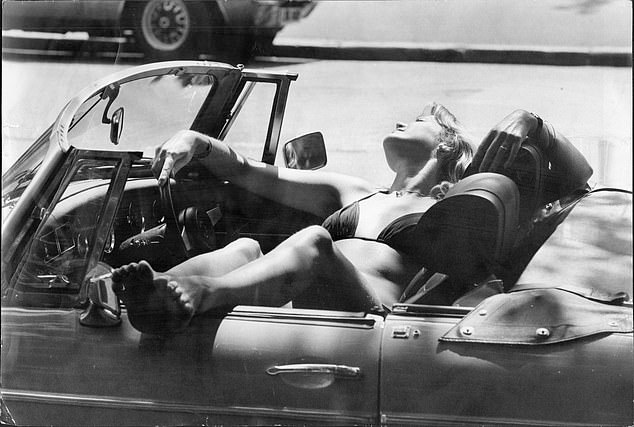
A woman in a Bikini lies sideways in her convertible sports car during the summer of 1976
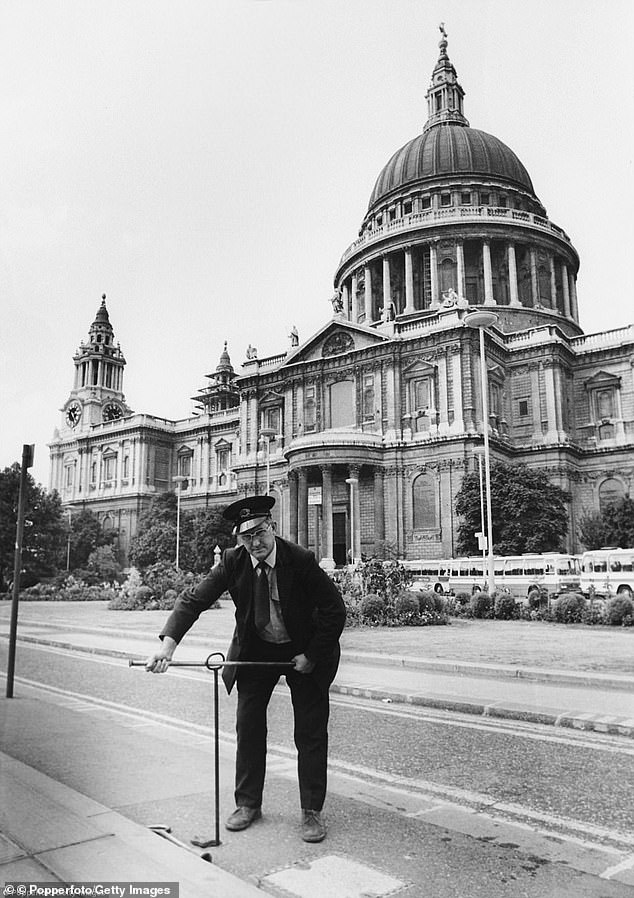
C Pillbeam, of the Metropolitan Water Board, turns down the water pressure at a turncock outside St Paul’s Cathedral, London on August 18, 1976. The mains water pressure was reduced by a quarter to conserve water supplies
And the trial of kidnapper Donald Nielson, who was nicknamed the Black Panther and was accused of murdering a 17-year-old woman, had to be suspended at Oxford Crown Court when a woman in the public gallery feinted.
And the Troubles in Northern Ireland continued to rage, with 297 people dying in 1976.
The number of killings that year was second only to 1972, when 480 people died.
As for the beer demand, the Brewers’ Society said: ‘We’ve never known such a year.
‘Demand is up by 60 to 80 per cent. God knows what will happen if water restrictions are imposed on the industry.
‘So far we’ve all be going mad producing enough beer… but the problem, for months, has been distribution.’
Brewers Trumans added: ‘Orders for lager are 80 per cent above expectations.
‘All our transportation staff have been working overtime to get the stuff out … using every minute of the legal limit on driving hours.
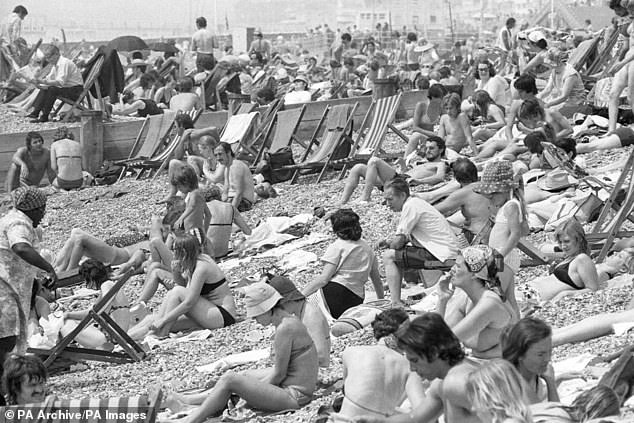
Sunbathers bask in the rays on Brighton beach, June 1976
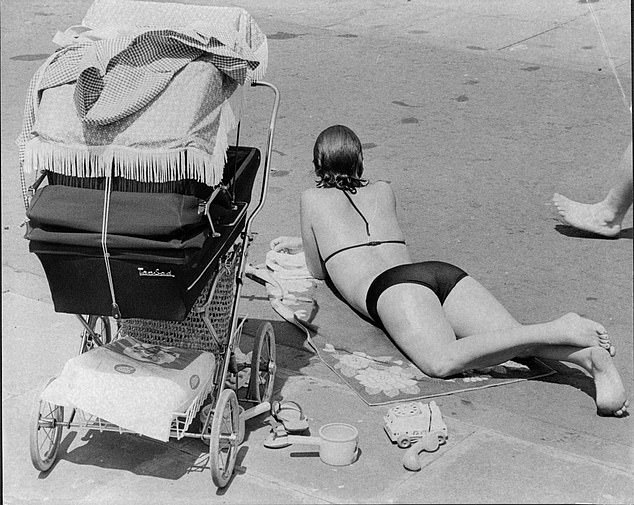
A mother lies in front of her child’s pram while enjoy the sun during the hot weather in 1976
‘And if this weather persists, a lot more pubs will run dry before we get back to normal.’
In the House of Commons, bar staff walked out in protest when officials refused to allow a similar relaxation in costume rules that would have allowed them to remove their traditional green jackets.
Above them, the Big Ben clock on what is now named the Elizabeth Tower suffered what was its only major breakdown due to metal fatigue caused by the heat. It took three weeks for the clock to be fixed.
The drought became so severe that the then Labour government, led by James Callaghan, considered getting water by tanker from Norway.
Legislation – the Drought Act of 1976 – was passed in rapid time to both impose a nationwide hosepipe ban and to grant the government emergency powers that allowed them to reduce or turn off water supplies to industry.
The then sports minister, Dennis Howell, was made the new minister for drought.
In Wales, the mains water supply was switched off for up to 17 hours a day.

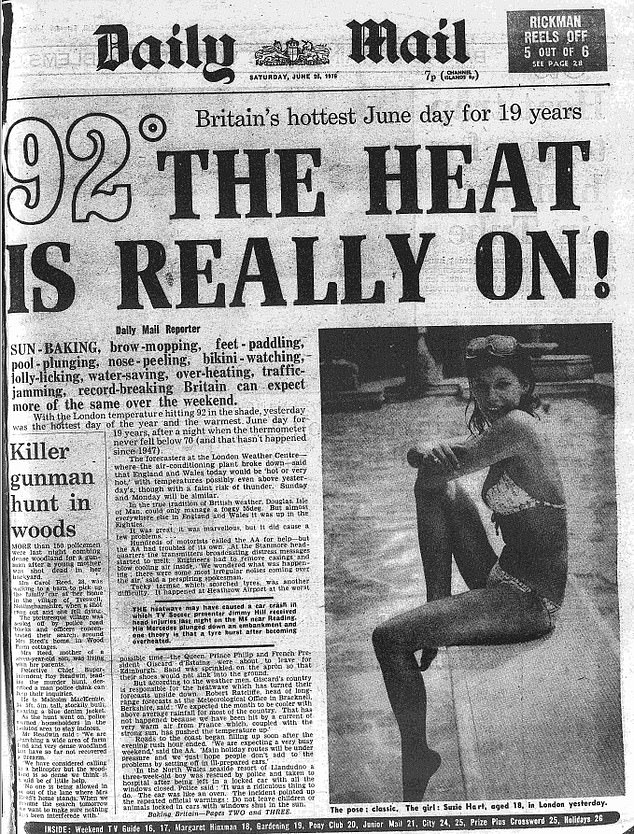
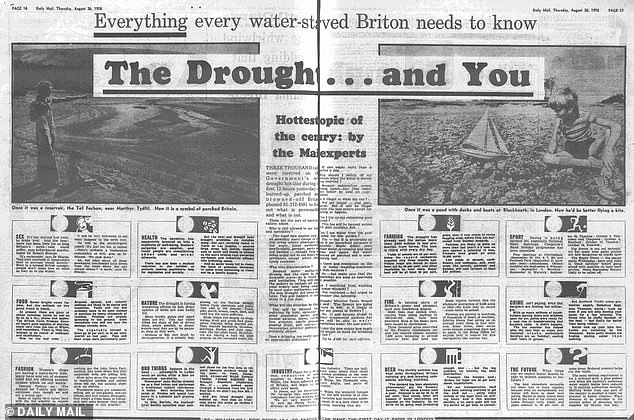
The Daily Mail’s coverage of the extreme heat in 1976 mentioned how cars were overheating and there was little sign of an abating of temperatures
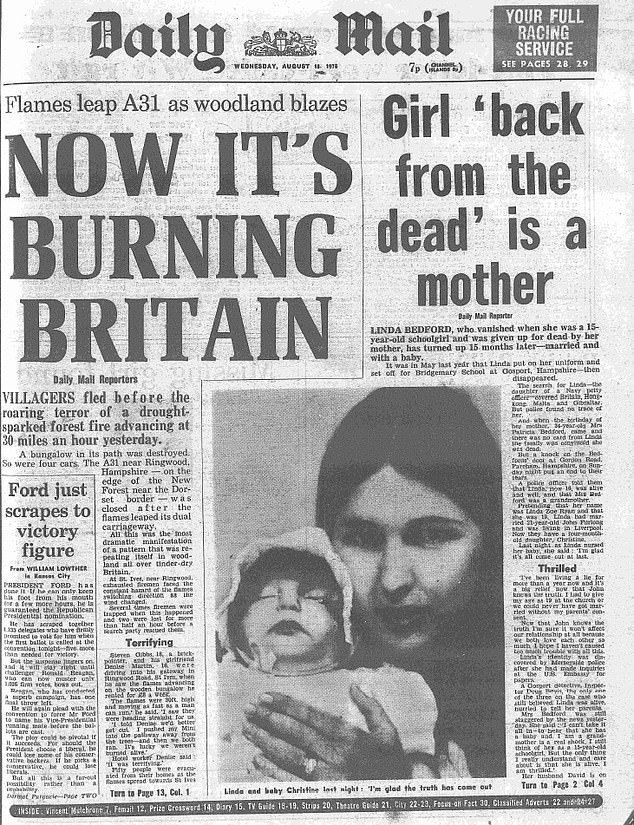
The Mail’s front page on August 18 reported on a forest fire near Ringwood in Hampshire
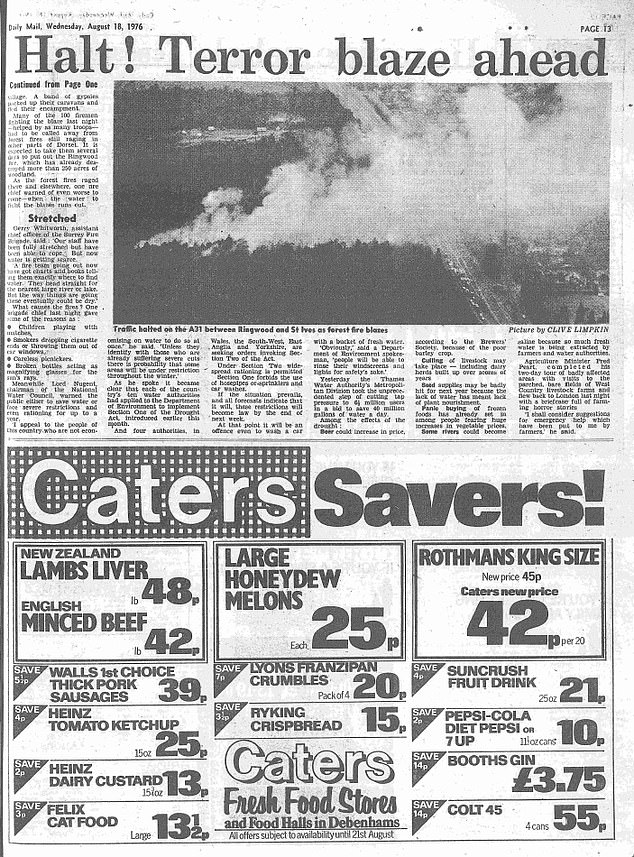
The story told of the huge blaze that left residents running for their lives
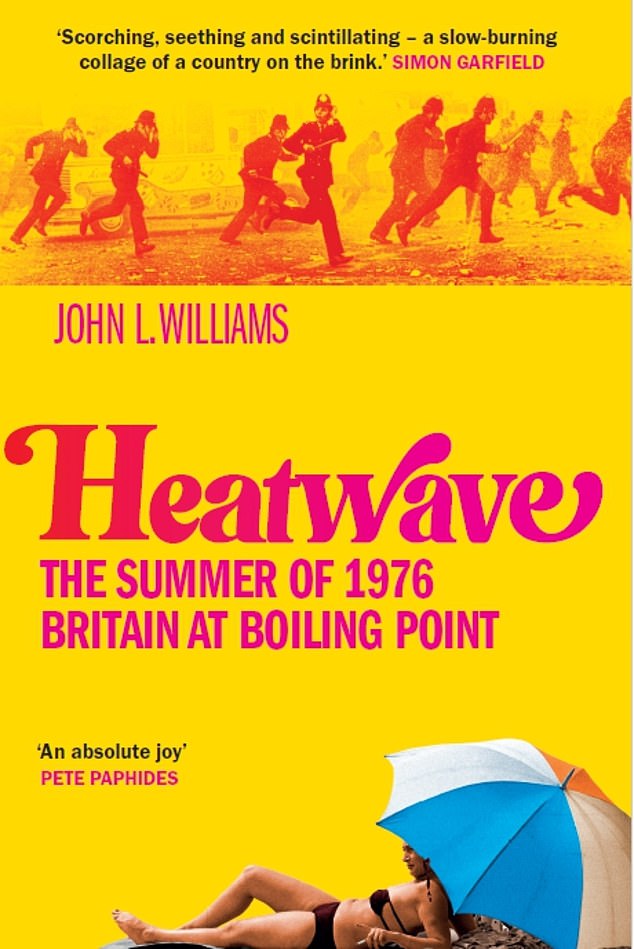
Heatwave: The Summer of 1976 Britain at Boiling Point, by John L. Williams, is published by Monoray
Each standpipe – an outdoor tap installed on streets – that people had to use was shared between 20 homes.
By late August, there were only 90 days’ of water supply left in London. In Leeds, the figure was 80.
It prompted t-shirt manufacturers to start selling clothes bearing the slogan: ‘Save Water – Bath With A Friend’.
Thanks to the dry reservoirs and sections of rivers, fish died in their thousands, whilst birds died of botulism – a disease caused by stagnant, de-oxygenated water.
The heat also caused an invasion of ladybirds, with their numbers so high that they were often unavoidably crushed underfoot.
The heat on stricken trains on the London Underground became so severe that people took to smashing train windows.
However, a week after Mr Howell’s appointment in late August as minister for drought, the rain finally arrived and the hottest and driest days of Britain’s most famous summer were finally at an end.
It had been the worst drought in England in 250 years.
Heatwave: The Summer of 1976 Britain at Boiling Point, by John L. Williams, is published by Monoray.












